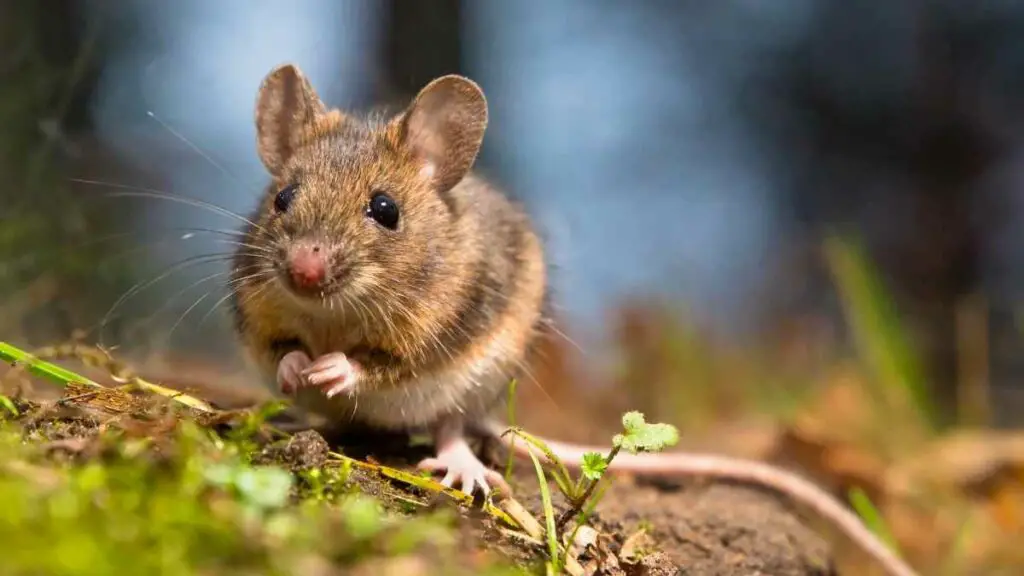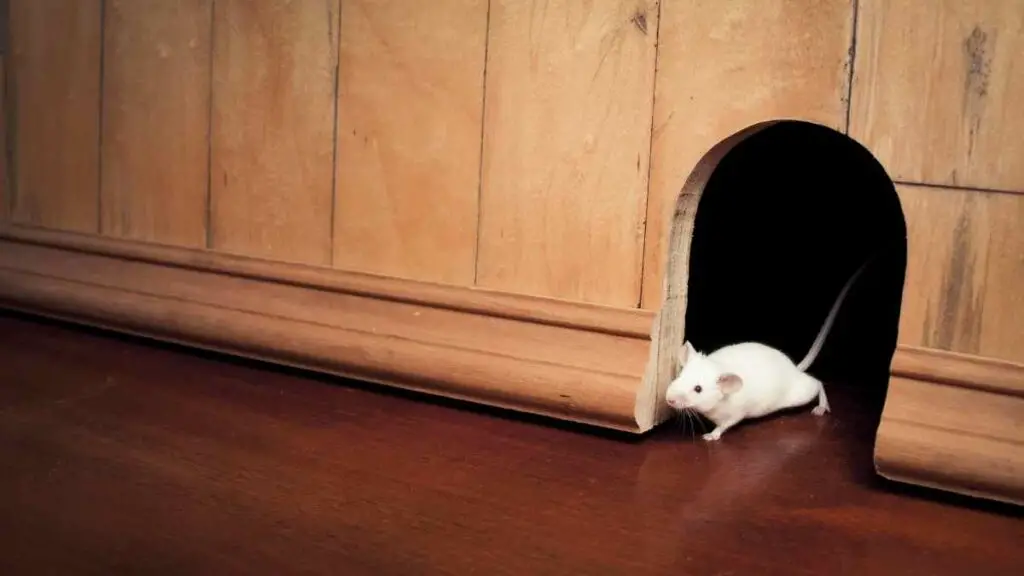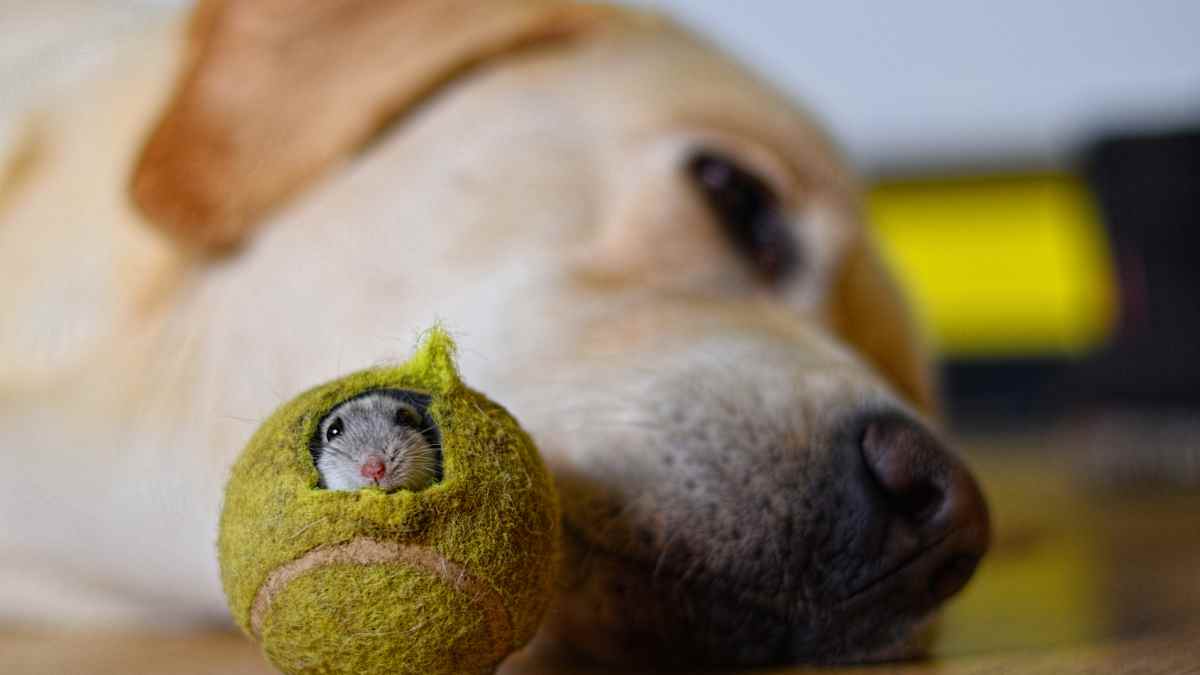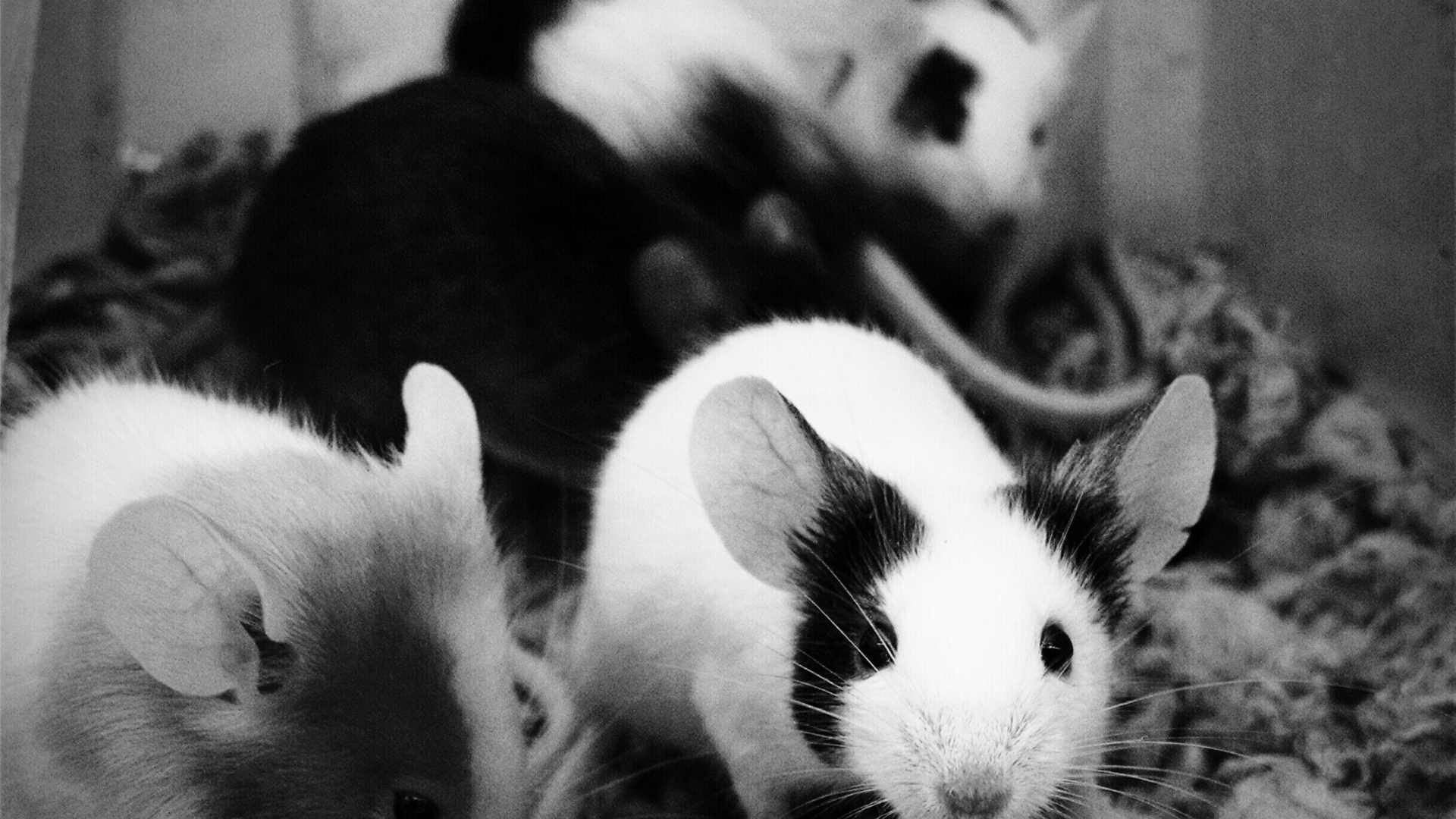How do dogs react to mice? Dogs possess an incredible sense of smell that allows them to perceive a world of scents beyond our awareness. They can catch whiffs of smells from far away, which is why some dog breeds are excellent at hunting and tracking things.
So, it’s no surprise that dogs can detect if there are mice in their homes much earlier than their owners. When dogs sense this strange smell at home, they start acting oddly.
In this article, you will understand how your dogs react when a mouse is in the house. You will also learn how they infest a home and how to eliminate them.

Dogs Vs. Mouse

There are specific breeds of dogs famous for hearing, smelling, and nabbing mice, but it is gradually becoming a thing with all dogs. Their instinct and sharp sense of smell and hearing to catch a mouse is top-notch. And this isn’t an ability reserved solely for our whiskered feline companions.
While some dog breeds boast prowess in spotting and capturing these critters, most dogs rely on their impressive sense of smell and acute hearing to sense something amiss when they hear the telltale sounds of scratching and scurrying within the walls. Even if these sounds aren’t audible, history has shown that dogs have excelled at unearthing mice. So, if you notice your dog acting peculiarly, don’t dismiss their behavior. Ignoring it might lead to a mouse infestation in your home. So this is how to know how your dog reacts to a mouse’s presence.
How Dogs Act When They Sense Mice: Signs to Watch For

Dogs respond to mice much like they do to squirrels and birds. They might start barking, leaping around, and trying to grab your attention. If you notice your dog pawing at the door, wall, cabinet, or even a significant appliance, it could be a sign that a mouse is hiding there. How your dog behaves depends on its usual temperament. If it gets thrilled about the critters it spots in the park, it’s likely to get equally excited at home.
These canine companions have an intriguing way of communicating when they sense the presence of mice. Pay close attention to these distinctive behaviors that might indicate your dog is onto something exciting:
- Alert and Attentive Stance: Picture your dog suddenly freezing in its tracks, ears erect, and eyes focused intensely. This heightened alertness showcases their readiness to investigate a new and possibly intriguing scent.
- Barking Alarms: If your home is suddenly echoing with more barking than usual, and your dog seems fixated on specific areas, they could signal mice’s presence. They’re alerting you to something out of the ordinary.
- Curious Head Tilting: That endearing head tilt appears when your dog encounters a novel scent, such as that of mice. Their curiosity prompts them to angle their head as they try to make sense of this new olfactory information.
- Whining and Puzzlement: A touch of whining, accompanied by a quizzical expression, might indicate that your dog is intrigued and perplexed by a particular scent. Mice could be the source of this canine contemplation.
- Investigative Scratching: Take note if your dog starts scratching at doors, walls, or corners more enthusiastically than usual. This behavior is their way of attempting to reach the source of the captivating scent.
- Energetic Running and Chasing: If your typically calm dog suddenly transforms into a whirlwind of energy, darting around the house with excitement, it’s likely that they’ve picked up on the presence of a mouse and are engaging in their natural chasing instincts.
- Intense Staring Sessions: Dogs often communicate with their eyes, and if you notice your dog intently fixating on a specific area, it’s as if they’re urging you to pay attention to that spot – a potential mouse hideout.
- Sniffing Every Nook and Cranny: Leverage your dog’s exceptional sense of smell. If they’re meticulously sniffing walls, corners, and seemingly mundane spots, they’re likely following a scent trail only they can perceive – that of mice.
- Meticulous Circling Rituals: Dogs might use purposeful circles to pinpoint the captivating scent’s location. This behavior showcases their determination to get to the bottom of the mystery.
With a watchful eye and a few proactive measures, you can outsmart those mice and ensure your home remains a fortress against their determined entry attempts.
How Mice Manage to Sneak into Your Home: Common Entry Points And Their Prevention

It’s a mouse’s world; they have crafty methods to infiltrate your living space. Let’s dive into the different ways these little adventurers find their paths into your home and what you can do to put a stop to their sneaky escapades:
1. The Roof Route: Tree Highways and Vertical Climbing
Mice are agile climbers who are not afraid to use nature’s architecture to their advantage. Overhanging trees and vegetation act as their highways, allowing them to access your roof easily. They’re also quite the mountaineers, scaling brick walls vertically. Once they’re up top, vents and chimneys become their secret doorways.
Prevention: To thwart these furry climbers, schedule regular roof inspections. Look for holes, gaps, or damage around vents and chimneys and promptly repair them. Also, keep your gutters clean to eliminate potential mouse hideouts. Installing chimney caps is a solid defense strategy.
2. Weep Vents: Unintentional Open Doors
Weep vents, those spaces between your bricks near the foundation, have a dual role – allowing water drainage and providing ventilation behind walls. Unfortunately, these convenient openings also serve as entry points for mice.
Prevention: Skip the plastic covers; mice can chew through those instantly. Instead, clear away woodpiles, leaves, and debris around your home’s foundation. Removing their attractions makes it harder for mice to find an easy way in.
3. Gap Intrusions: Exploiting Material Junctions
Mice are experts at finding gaps and are not picky about where they appear on your home’s exterior. Any spot where different materials meet is a potential entry point. Their favorite access spot is the gap between the bricks and the soffit.
Prevention: Conduct a thorough inspection for gaps around your home. Seal any spaces you find between bricks and the soffit. Additionally, keep a vigilant eye for cracks in siding, foundation, roof, soffit junctions, and roof and fascia connections.
4. Following Utility Lines: A Highway into Your Home
Utility lines are like highways for mice, leading them straight into your home. These lines often run through exterior walls and are accompanied by air conditioners, heaters, electrical wires, and water connections – all offering enticing entry points. Once inside, mice navigate through holes intended for pipes, wiring, and ducts.
Prevention: Plug up any exterior holes around wires and pipes using caulk. This creates a barrier that stops mice from hitching a ride into your living space.
5. Door and Window Intrusions: The Classic Entry Points
Doors and windows are the most familiar entry points for mice. Doors or windows that don’t close snugly are a welcoming mat for mice seeking food and shelter.
Prevention: Embrace the habit of securely closing doors and windows. Seal gaps around doors and windows with caulk to discourage mice from getting in. Adding weather stripping around doors keeps mice out and enhances your home’s energy efficiency.
Conclusion
Every dog has its personality, just like people do. This means some of these behaviors might be more prominent in your furry friend than others. If you notice any of these signs in your dog’s behavior, don’t dismiss them.
Dealing with rats, mice, and other pests in your home or business can be unpleasant. Understandably, nobody wants to face these issues. Thanks to your dog’s remarkable sensory powers, a closer look could open the door to a fascinating revelation. After all, these canine companions have a way of showing you hidden wonders that we might otherwise miss.








